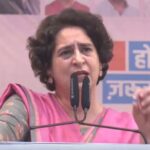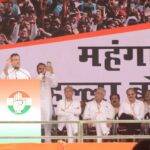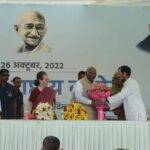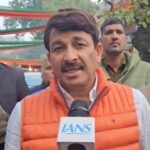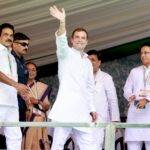New Delhi On one hand, all the leaders of the Congress Party and especially Rahul Gandhi, keep trying to corner the Narendra Modi government by citing rising inflation, unemployment, and the deteriorating condition of farmers in the country. At the same time, the white paper released by the Narendra Modi government in the Parliament exposed the economic mismanagement of the UPA government.
It mentions all the efforts made to improve the economic health of the country during the ten years of PM Modi’s tenure. Perhaps this is the reason why PM Modi has repeated many times that if he had not worked on this, inflation in the country would have been at its peak today. Along with this, the country’s economy is on track, its complete details were in the white paper, due to which PM Modi claims that in his next term, he will make the country the third largest economy in the world.
In the white paper tabled in Parliament, the Finance Minister had explained how the Congress-led UPA government had caused a major injury to the country’s economy with its debt. Not only this, due to the economic mismanagement of the UPA government, foreign investors started avoiding investing in India. There was also a decline in the manufacturing sector. During this period, inflation had reached its peak.
According to the data released in the White Paper, when the UPA government started its tenure in 2004, the country’s economy was growing at the rate of eight percent. The growth rate in industry and service sector was more than 7 percent. The growth rate of agriculture sector was more than 9 percent. Between 2004 and 2008, the country’s economy witnessed significant growth as a result of Atal Bihari Vajpayee’s economic policies. Although the UPA government took credit for the significant growth in the economy till 2008, it blamed the subsequent fiscal deficit and decline in inflation on the global economic slowdown.
During his tenure, Prime Minister Narendra Modi kept his country’s economy in a strong position by overcoming terrible problems like Covid and the Russia-Ukraine war, which ruined the entire world economy.
According to the white paper, inflation was at its peak between 2009 and 2014. There was a significant decline in fiscal deficit between 2009 and 2014, due to which the general public had to face problems on the economic front. Not only this, inflation was in double digits between 2010 and 2014. The average inflation rate between 2004 and 2014 was 8.2 percent. On the economic front, this situation was no less than a disaster for a developing country like India. In some years of the UPA government, the inflation rate remained at double digits.
In the white paper, the Finance Minister told how the loans taken by the UPA government had devastated the banking system in the country. At the same time, when NDA came to power under the leadership of Atal Bihari Vajpayee, non-performing assets were 16 percent. After this, when the UPA came to power, it reached around 7.8 percent. It has been told in the white paper that the compound annual growth rate between 2004 and 2014 had reached 21.1 percent, whereas under the Modi government, it is 4.5 percent between 2004 and 2023. At the same time, the position of foreign exchange reserves in the UPA government was that in July 2011 it was 294 US dollars billion. It declined to US$256 billion by August 2013. As of September 2013, foreign exchange reserves for imports were sufficient for a little more than 6 months, while in March 2004 it was sufficient for 17 months.
In this way, the UPA government blamed the global recession of 2008 for its economic failure, whereas the Indian economy was not significantly affected by it. Not only this, once the UPA government itself accepted its failure, the government while responding to a PIL, said that out of 40 thousand km of national highways, 24 thousand km of national highways were built during the NDA regime from 1997 to 2002. Were. UPA built only 16 thousand kilometers of national highways during its 10 years of rule. This clearly shows that the UPA government did not pay attention to basic development.
According to the white paper, the UPA avoided spending huge amounts of money on many social schemes during its 10-year rule. Also, avoid spending in the health sector. At the same time, the Modi government rectified the mistakes made by the UPA government after coming to power.
Let us tell you that under the Modi government, Jan Aushadhi Centers increased from 80 to 10 thousand. 50 lakh people were insured under the Ayushman Bharat scheme. Not only this, the UPA government also neglected the defense sector. By 2012, the army was suffering from a shortage of basic weapons. After coming to power, the Modi government gave special emphasis to the defense sector. Started strategic projects in the Himalayan region. Manufacturing was indigenized. Rafale was acquired. Provided OROP, INS Vikrant, Defense Corridor, Bulletproof Jacket, and other military equipment to the army. BRO’s budget also registered a 4-fold increase.
Apart from this, the corruption committed by the UPA government was prominently highlighted in the white paper, which also includes the 2G spectrum scam. The government had suffered a loss of Rs 1 lakh 86 thousand crore due to the Coal Gate scam. Apart from this, some scams like the Commonwealth Games, Saradha Chitfund, Adarsh Housing Society, and Augusta Westland ruined the country’s economy. At the same time, in 2014, when the BJP projected Narendra Modi for the post of Prime Minister, he made it clear in his address that “When the UPA government goes, it will leave behind big economic challenges, but I am not worried. I am fine. I will do it.”
After 2014, the Modi era started in the country, after which winds of development blew in every sector of the economy. If we make a comparative study of the policies of the Modi government and the UPA government, while the inflation rate from 2004 to 2014 was 8.2 percent, between 2014 to 2023 it reached close to 5 percent.




